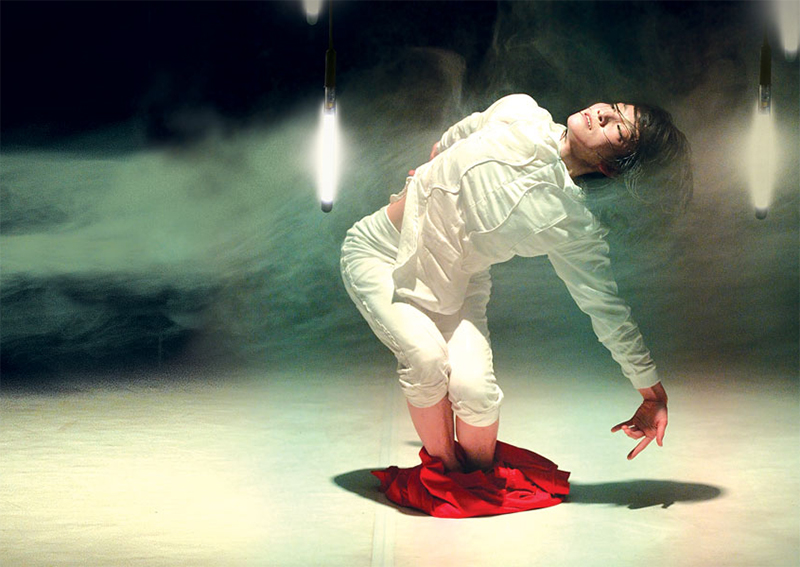OzAsia Review: Andropolaroid 1.1

In Andropolaroid 1.1, Berlin-based Japanese dancer Yui Kawaguchi performs in white clothing on a white stage amidst arrays of vertical white neon tubes suspended in oblique planes.
With its shadowy black backdrop, the space could be a forest, or a laboratory, or a futuristic urban environment, and the solo Kawaguchi moves with robotic precision among the lights.
Heavy strobing sees the first section of the piece experienced as a series of anxious retinal imprints, the afterimage of the lights and Kawaguchi’s leaping form lingering as a silhouette in the darkness between each flash.
The lights – designed by Fabian Bleisch, Kawaguchi’s husband – flicker and glow, casting changing shadows that continually redefine the space, creating new visual fields for Kawaguchi’s arching movements to sounds of electronic pings and swelling strings.
The performance has beautiful moments, including a section danced to simultaneous Japanese and German announcements, as though in some strange subway station, reinforcing motifs of identity and belonging.
Other sections are a little less adventurous and at times seem vaguely unpolished. The choice of a red hoodie, dropped from the ceiling to become an agent of change in the piece, does little to impart a sense of wonder despite some intriguing applications in Kawaguchi’s gestures and movements.
Across the piece Kawaguchi’s relationship with the lights shifts from initial trepidation to cautious interaction, lending a sense of two distinct presences in the space: one humanoid and one luminously dispassionate.
OzAsia Festival, 10 November 2018, Space Theatre